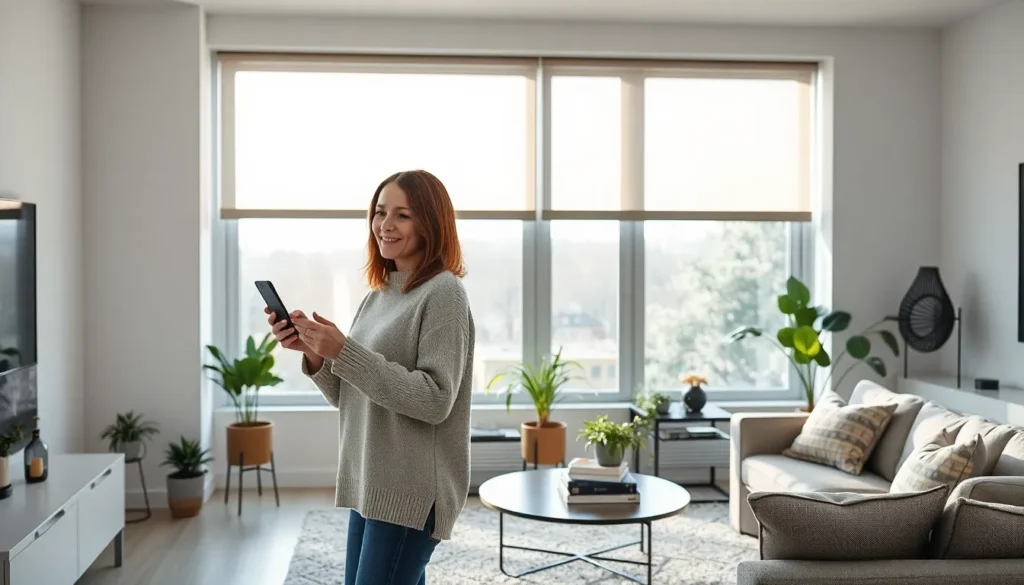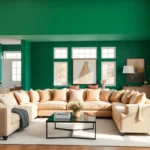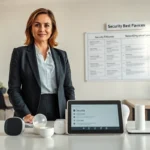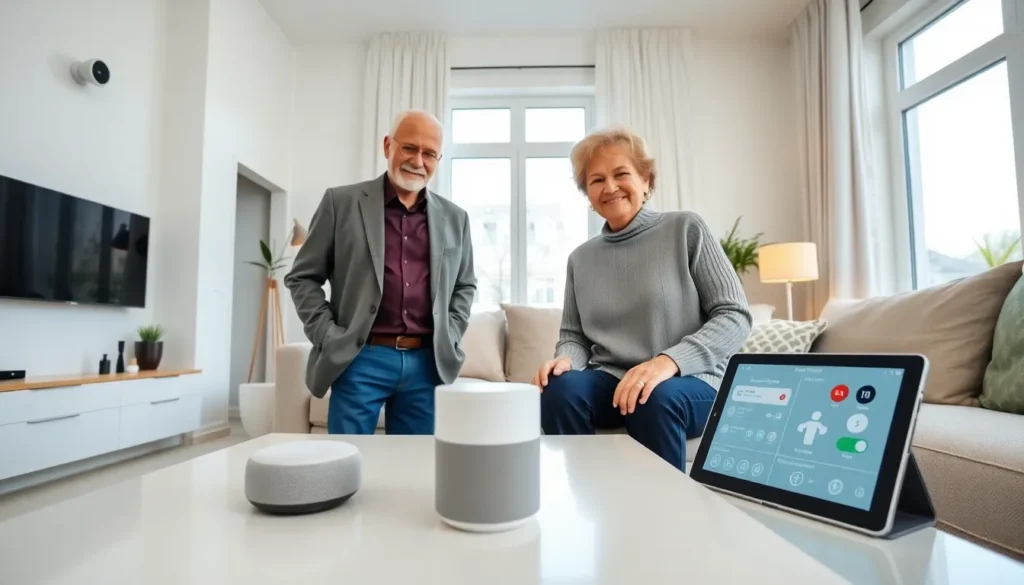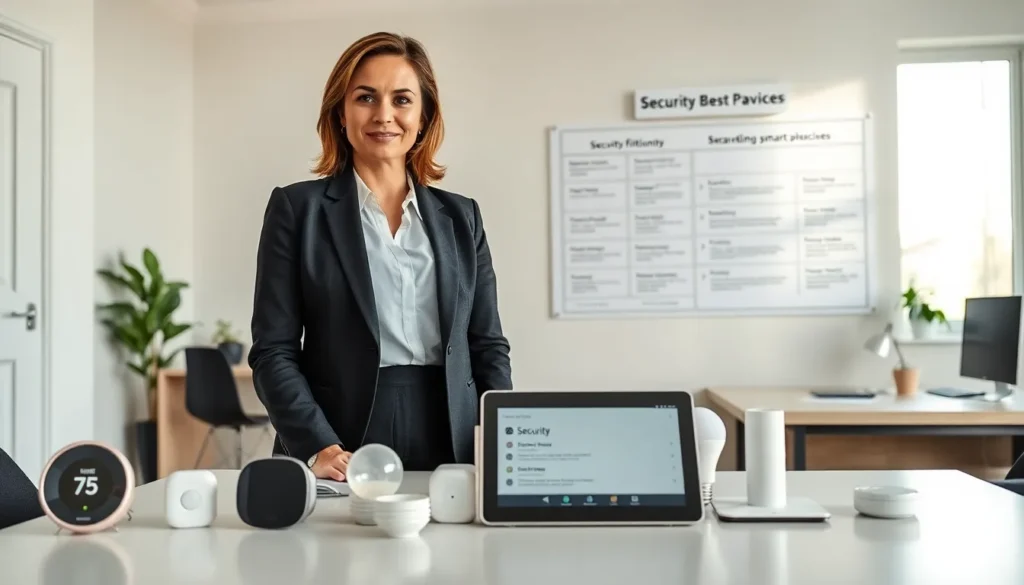Imagine waking up to the sun gently streaming through your windows, all thanks to a little magic called automated window treatments. These high-tech marvels not only add a touch of elegance to any room but also let you control your light and privacy with just a tap on your smartphone. Who knew that managing sunlight could be so effortless?
Table of Contents
ToggleOverview of Automated Window Treatments
Automated window treatments leverage advanced technology to transform how individuals control light and privacy in their living spaces. These systems integrate with smart home devices, allowing seamless operation through mobile apps or voice commands. Users enjoy the flexibility of scheduling adjustments based on time, weather, or personal preference, enhancing comfort throughout the day.
Various types of automated window treatments include roller shades, blinds, and curtains. Roller shades provide a sleek look, while blinds offer precise light control. Curtains can add a touch of elegance to any room, giving users the opportunity to customize aesthetics while benefiting from automation.
Energy efficiency represents another significant advantage of automated systems. Homeowners reduce energy consumption by optimizing natural light and maintaining temperature control. According to the U.S. Department of Energy, well-timed window treatments can lead to energy savings of up to 30 percent.
In terms of installation, many automated window treatment options come with user-friendly setups. Some systems require professional installation, while others allow for DIY application. Integrating these products into existing smart home systems often includes compatibility with platforms like Google Home, Amazon Alexa, and Apple HomeKit.
Style plays a crucial role in choosing the right automated solution. With various materials and colors available, individuals customize their window treatments to match their interior design. High-quality fabrics and finishes enhance both functionality and aesthetics, ensuring satisfaction in personal spaces.
Ultimately, automated window treatments provide convenience and efficiency while elevating home comfort. This innovative technology continues to evolve, offering homeowners unmatched control over their environments.
Benefits of Automated Window Treatments

Automated window treatments provide numerous advantages that enhance both functionality and aesthetics within home environments.
Energy Efficiency
Energy savings reach up to 30 percent, thanks to automated window treatments that adjust based on sunlight. Timely opening and closing of shades reduces the need for excessive heating and cooling, allowing for more efficient energy consumption. Homeowners can program them to respond to weather conditions or specific times of day, optimizing indoor temperatures. Additionally, integrating these systems with smart home devices enhances efficiency, ensuring that homes stay comfortable with minimal energy usage. A reduction in energy bills can also result from these practices, contributing positively to overall sustainability efforts.
Convenience and Comfort
Automated window treatments deliver unparalleled convenience and improved comfort. Users can control window coverings with mobile apps or voice commands, eliminating the need to manually adjust each treatment. This feature enables effortless management from anywhere, whether relaxing on the couch or away from home. Furthermore, personalized schedules allow homeowners to set preferences for different times of the day, providing optimal privacy and light levels. Enhanced comfort is achieved, as individuals can quickly adapt their environment without interrupting daily activities. With these systems, automatic adjustments cater to specific needs, merging functionality with luxurious ease.
Types of Automated Window Treatments
Automated window treatments come in various styles, each tailored to meet distinct needs in light control, aesthetics, and convenience.
Smart Blinds
Smart blinds incorporate advanced technology to offer precise control over light and privacy. Users manage these systems via mobile apps or voice commands, ensuring effortless operation. Integration with smart home devices enhances functionality. Some varieties automatically adjust position according to sunlight, improving energy efficiency in the home. Many smart blinds feature customizable settings, allowing homeowners to create unique schedules. Additionally, they are available in various materials and colors, accommodating different interior designs and preferences. Enhanced convenience and energy savings appeal to those seeking innovative solutions for window treatments.
Motorized Shades
Motorized shades operate with a simple push of a button, providing ease and functionality. Many models are available with remote control options for added convenience. Users can program these shades to open and close based on specific times of day or weather conditions. Energy-efficient materials often utilized in motorized shades contribute to reducing heating and cooling costs. Various styles exist, from sheer to blackout options, allowing for tailored light management. Many motorized shades seamlessly integrate into existing smart home systems, increasing their versatility. Homeowners appreciate the blend of contemporary design and practical benefits these shades offer.
Installation and Setup
Automated window treatments present multiple installation options tailored to user preferences and skills. Homeowners can choose between professional installation or DIY methods, depending on comfort and experience.
Professional Installation
Engaging a professional installer ensures optimal placement and functionality of automated window treatments. Experts handle the entire process, including measurements, mounting, and programming. They offer valuable guidance regarding suitable products for specific window sizes and styles. The price for professional installation typically ranges from $100 to $300, depending on complexity. Experienced installers also provide post-installation support, ensuring systems operate seamlessly with existing smart home setups.
DIY Options
Choosing DIY installation provides flexibility and potential cost savings. Homeowners can typically find installation kits from manufacturers, which include clear instructions. Tools like drills, screws, and brackets might be necessary. Many systems feature straightforward mounting mechanisms designed for user-friendliness, making it possible for anyone to manage installation. Budget considerations often allow savings of $50 to $150 compared to professional installations, making DIY an appealing option for many. Adjusting settings and integrating with smart home platforms also falls within most users’ capabilities.
Cost Considerations
Automated window treatments come with various price points, influenced by factors like type, material, and installation method. Basic roller shades may start around $100, whereas high-end motorized curtains can exceed $1,000. Quality materials and custom designs significantly affect costs.
Installation expenses also contribute to the overall budget. Choose between professional installation, which typically costs between $100 to $300, and user-friendly DIY approaches that can save $50 to $150. Users can find installation kits designed for straightforward setup, making DIY options attractive for cost-conscious homeowners.
Energy savings represent another financial consideration. Automated window treatments can lead to energy savings of up to 30 percent, especially when programmed based on sunlight and weather conditions. Over time, reduced energy bills can offset initial investment costs, making these systems not just aesthetically pleasing but also economically beneficial.
Maintenance costs tend to be minimal, primarily consisting of occasional cleaning or replacing batteries in motorized options. Typically, routine upkeep keeps these treatments functioning well for several years.
Budgeting properly is crucial when considering automated window treatments. Establishing a clear financial plan can help individuals choose the right combination of style, functionality, and technological features, ensuring satisfaction and long-term utility in their homes.
Automated window treatments represent a significant advancement in home technology. They seamlessly blend style with functionality while enhancing energy efficiency and convenience. Homeowners can enjoy personalized control over their environment through intuitive smartphone apps and voice commands.
With various options available from smart blinds to motorized shades there’s something to suit every aesthetic and practical need. The potential for energy savings adds to their appeal making these systems not just a luxury but a smart investment. As technology continues to evolve automated window treatments will likely become an essential feature in modern homes. Embracing this innovation can transform living spaces into more comfortable and efficient environments.

